- 24.10.2025
- 8 min read
- Artur Tereshchuk
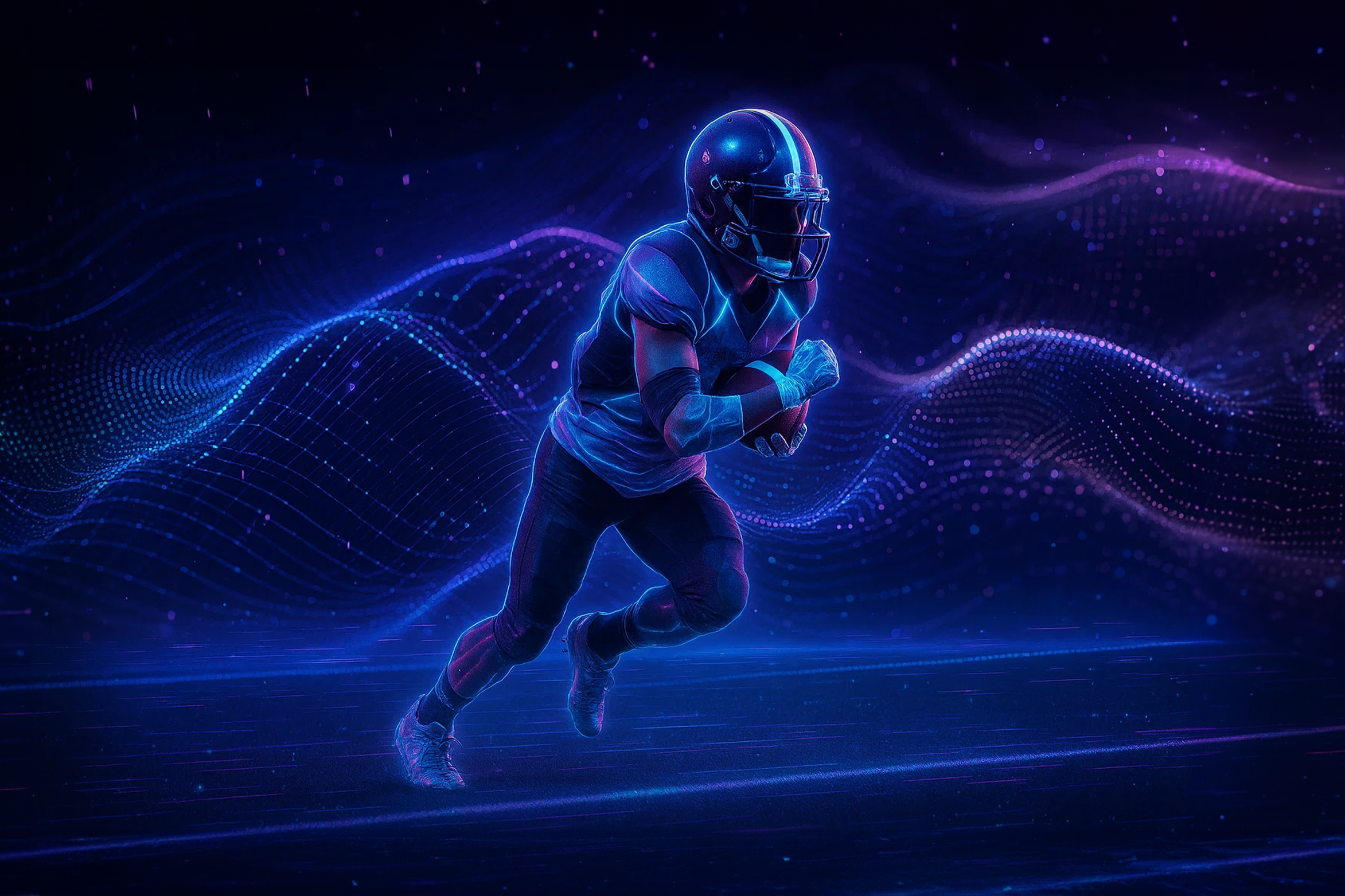

Virtual reality sports training has been part of athletes’ routines for at least half a decade, so it’s not a groundbreaking novelty. What’s changed is adoption and maturity. The tech is better, the use cases are clearer, and the workflows are tighter.
Today, athletes can run a critical two-minute drill 50 times in a row without wearing down teammates or risking injury. They can practice skills, analyze performance, and build game intelligence in ways that were hard to do on the field alone. In football and other sports, what once required a full unit can now be rehearsed in a headset.
For organizations, that translates into safer workloads, clearer data, and faster iteration between practice and review. As virtual reality football training matures, teams are aligning VR reps with on-field execution — raising performance while managing risk and cost.
Now let’s move from context to practice. We’ll explore how modern VR training solutions are reshaping the way athletes prepare, learn, and analyze performance — using real-world examples.
The core mechanism of virtual reality sports training is strengthening neural connections tied to complex behaviors. When an athlete executes the right decision or motor pattern, like delivering an accurate pass, immersive repetition reinforces the corresponding pathway. In turn, it increases the odds of repeating that success under pressure.
This directly addresses the “10,000-hour” challenge. Achieving expert-level understanding has traditionally required thousands of hours of learning and doing — more than most programs can realistically schedule. Virtual reality football training compresses that timeline by concentrating meaningful reps into focused ten- to fifteen-minute intervals, followed by immediate review and feedback.
QB SIM, developed by Sports VTS with N-iX MR, is a good example of that. It’s a quarterback training simulator that combines a VR headset with real physical elements — players wear a headset on the field and throw an actual football that’s tracked into the virtual world.
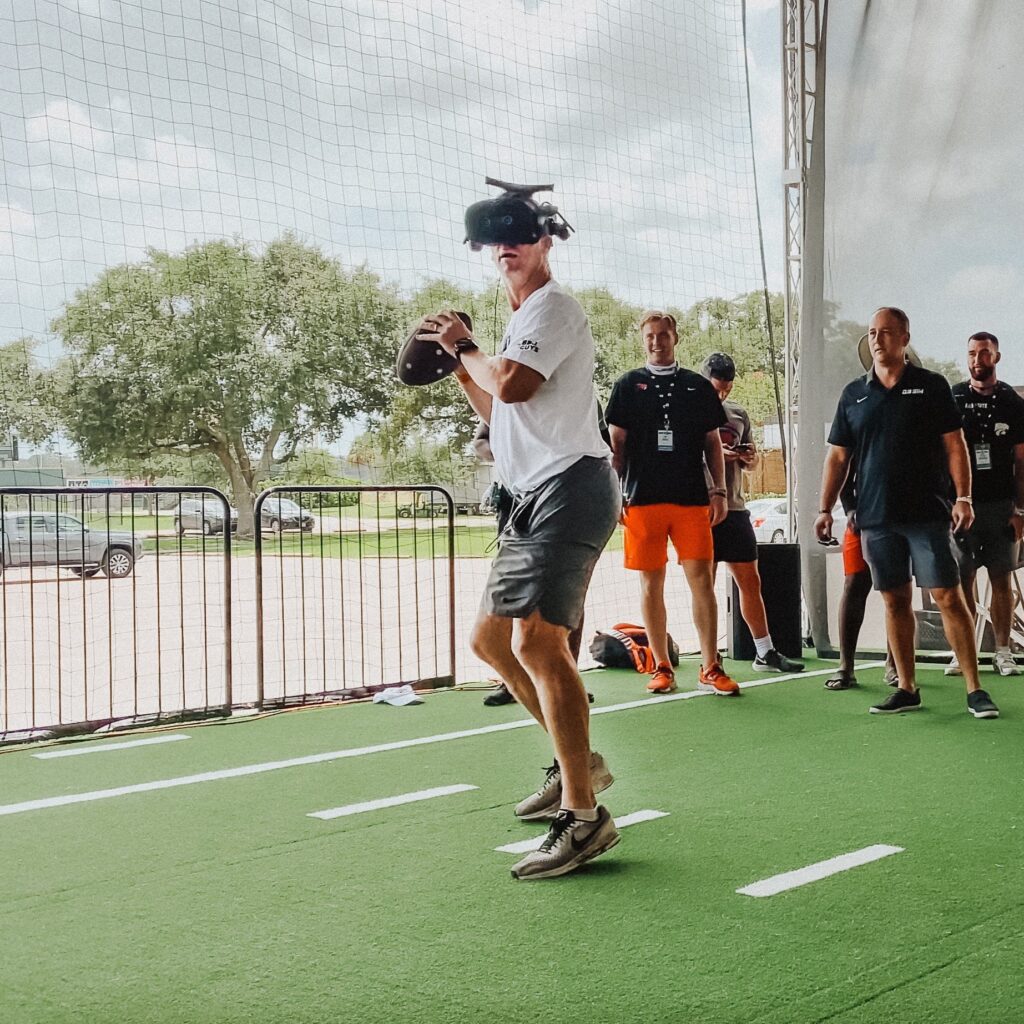
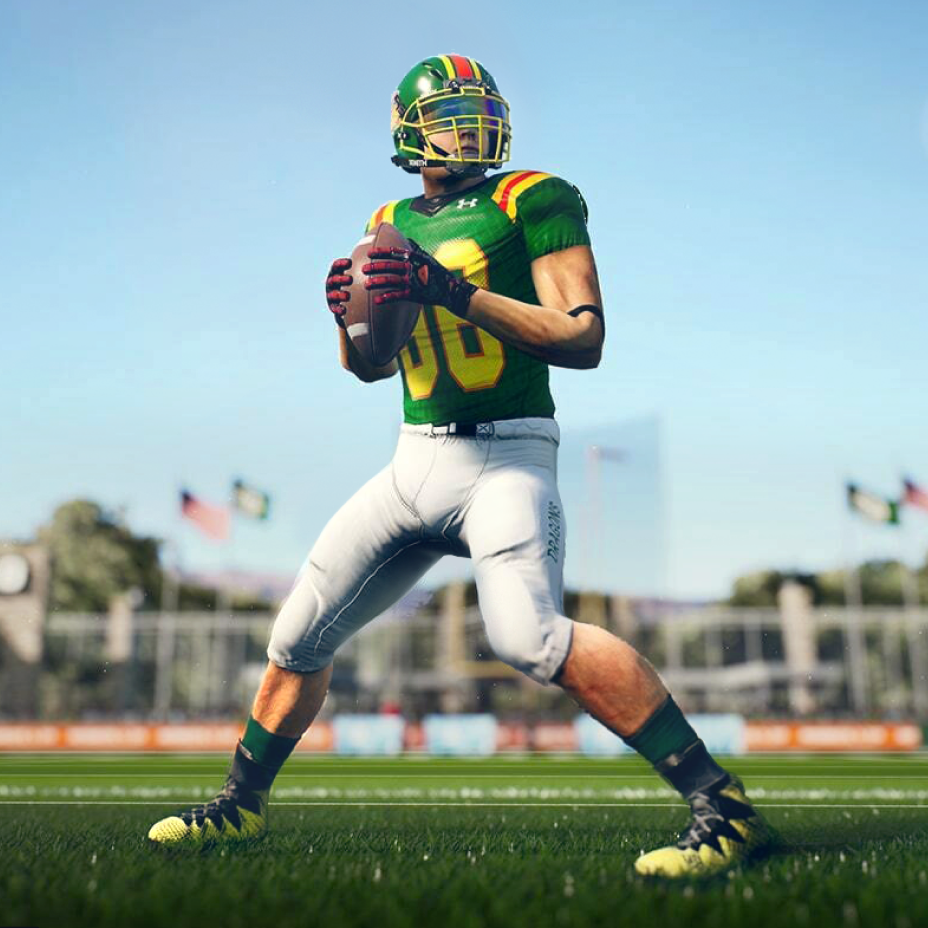
This design lets quarterbacks practice their throwing mechanics and timing as if in a live drill, but without a live defense crashing into them. Motion-tracking cameras capture the real ball’s trajectory and integrate it into the simulation, so the QB sees their throw in VR sports training module and gets immediate feedback on accuracy. The system is powered by over a decade of real game data and AI, meaning the virtual defenders and receivers move with realistic patterns.
The benefit is twofold: the QB refines muscle memory by throwing a real ball (avoiding the “air guitar” effect of practicing without physical feedback), and they do so in a controlled setting with no injury risk. By focusing on the cognitive and procedural parts of play execution, athletes can significantly sharpen skills that carry over to on-field performance.
This VR football training also provides real-time analytics that give coaches and athletes granular performance insight. Instant visual and auditory feedback post-play makes it easier to correct mistakes while the memory is fresh. Coaches can track primary user data, assess response times, and quantify changes in accuracy and decision speed. That clarity supports personalized training plans and replaces subjective observation with objective metrics.
In a typical week, only a fraction of players get meaningful live reps in practice. Virtual reality football training like QBSIM balances that. Coaches load a set of core plays and variations, then send the same VR sessions to every quarterback. Each player practices the same choices, with the same timing and defensive looks. That means consistent learning — backups get the exact reps the starter gets.
This is especially useful on short weeks or when the playbook changes midseason. Instead of waiting for field time, coaches assign short 10–15 minute virtual reality sports training sessions. For example, a module might focus on reading defenders near the end zone or handling extra pass rush. Immediate feedback — where the throw landed, how long the decision took, and whether the read was correct. It quickly shows what a player is missing before practice. If someone stares at the first option too long or throws late, it shows up in the data and becomes a clear coaching point.
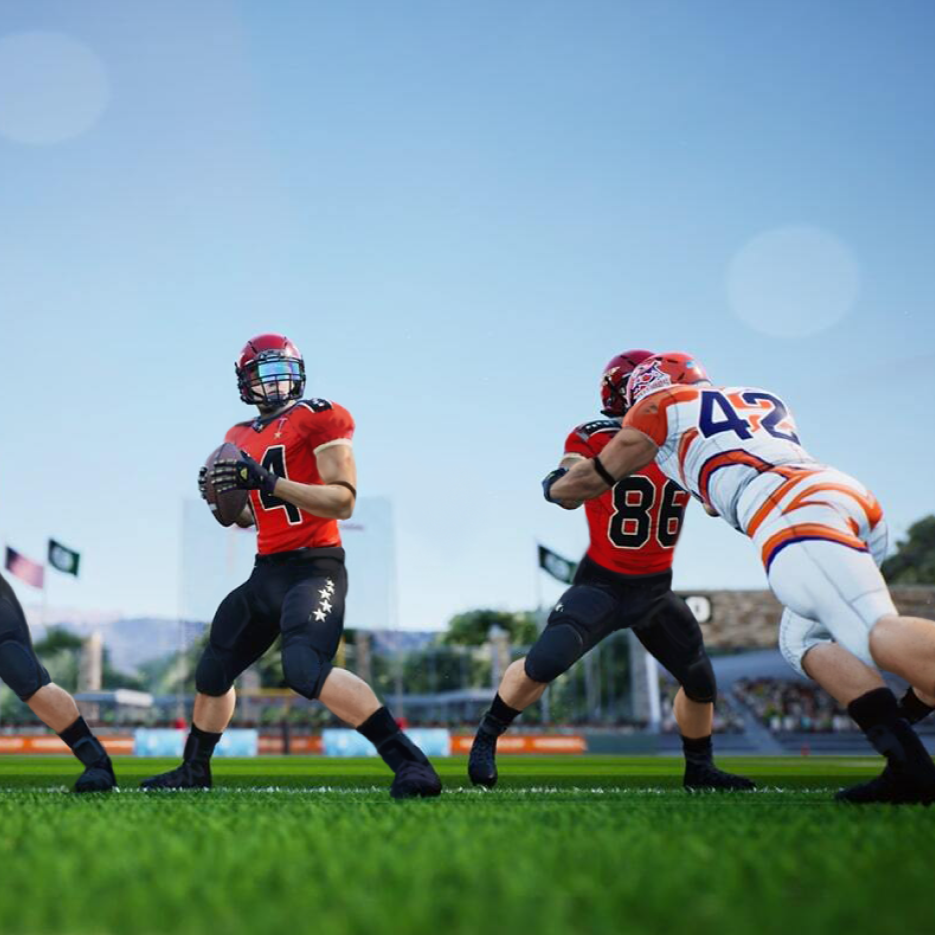
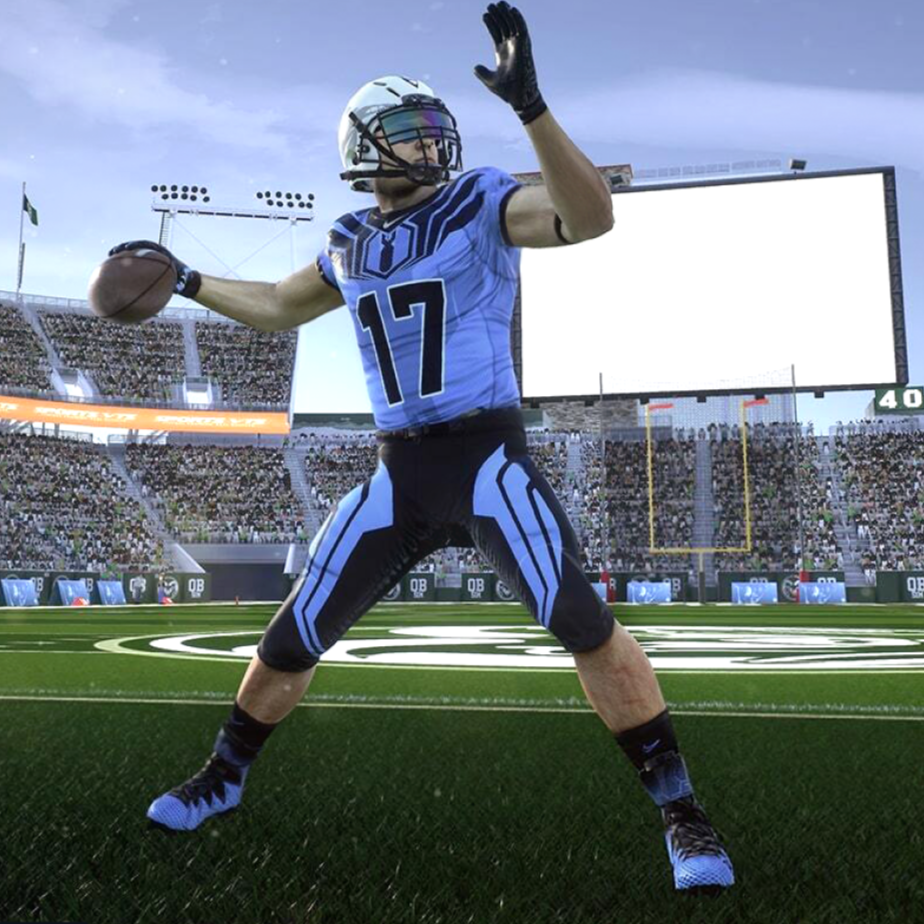
VR sports training turns learning from a slow, field-only process into a faster, parallel one. More players get more quality mental reps, sooner. Practices focus on refining, not introducing from scratch, which saves time, reduces errors on game day, and raises the overall level of the room.
VR isn’t only for on-field skill work; it’s also reshaping how athletes and coaches review performance and plan strategy. Another example from our recent projects is the NFL PRO ERA Visualizer, a VR football training application developed by StatusPRO. It recreates actual football games in a virtual environment, allowing users to step onto a 3D field and study plays from any angle.
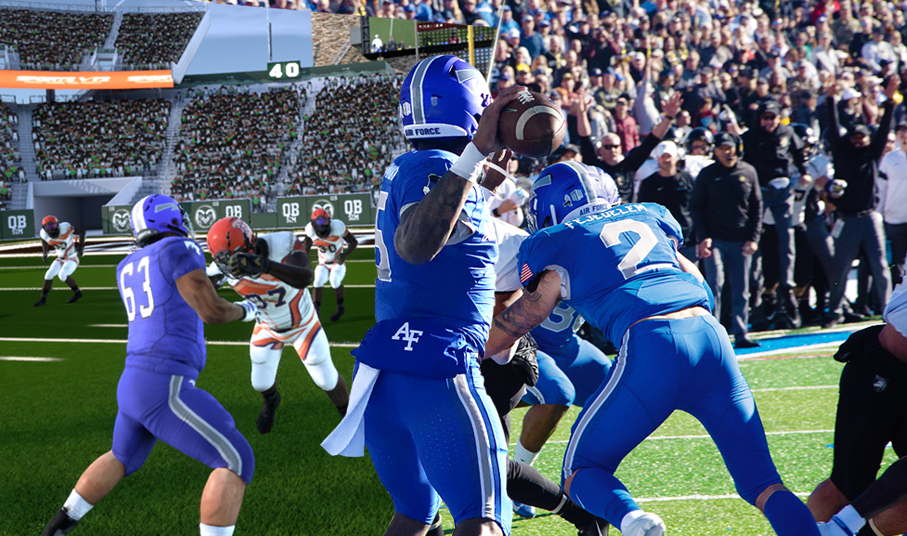
Instead of watching 2D film from sideline or end-zone cameras, a player can virtually stand in the quarterback’s shoes and replay the action. Coaches use this to teach situational awareness — for instance, a linebacker can experience a key 3rd-down play in VR sports training module and see how formation and motion look at eye level.
The PRO ERA Visualizer mirrors real NFL game data, so every player movement matches the original play. Teams can re-live a pivotal touchdown or a blown coverage in an immersive way, isolating what went right or wrong. Coaches can pause, rewind, or free-fly a camera around the play to highlight teaching points.
StatusPRO’s tool has been used in partnership with broadcasters as well — ESPN debuted it to let commentators (former players Dan Orlovsky and Andrew Hawkins) virtually dissect how a team’s offense executed a scoring drive.
By training with such a system, players are effectively doing high-tech film study: they review their own performances in detail or scout opponents, but with the added benefit of presence. This level of immersion can improve retention of coaching points and help players react faster when they see similar looks in real games.
Despite the excitement, virtual reality sports training is not a magic replacement for all real training. There are clear limitations, and it works best as a complement to physical practice.
VR gives athletes a powerful new training tool — it excels at enhancing tactical awareness, reaction drills, and scenario prep. But athletes still need real-world reps for strength, muscle memory, and instinct in chaotic physical play. It must be integrated thoughtfully alongside traditional training to get the best results.
At N-iX MR, we’ve worked on some of the cutting-edge projects driving this new era of training – from co-developing a VR football training simulator to oil & gas specialist training, where VR delivers significant value in employee safety and cost reduction.
These experiences have given us firsthand expertise in what it takes to create effective, high-quality VR/AR applications: realistic 3D graphics, precise motion tracking, intuitive interaction design, and seamless integration of data and AI.
If you have a mixed reality, augmented reality, or virtual reality project in mind — whether it’s in sports, education, enterprise, or any innovative field — our team is ready to help you turn that concept into a tangible solution. Let’s get in touch!